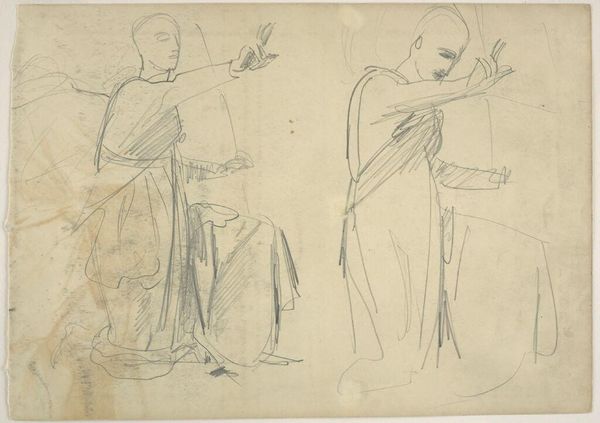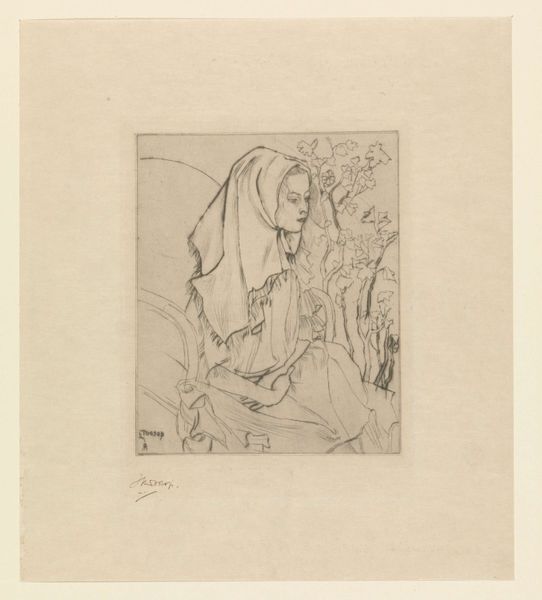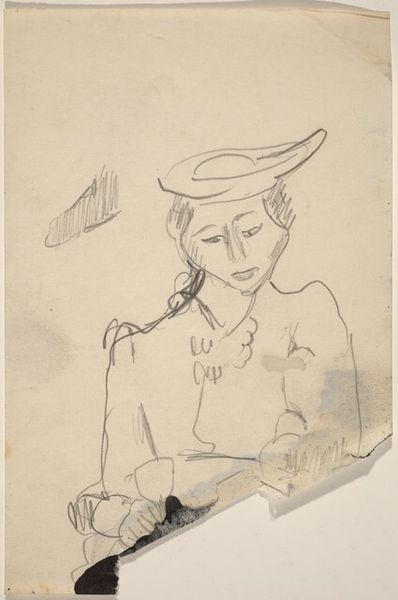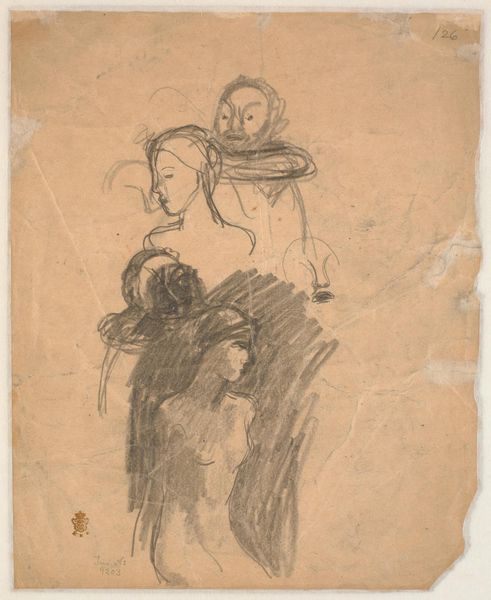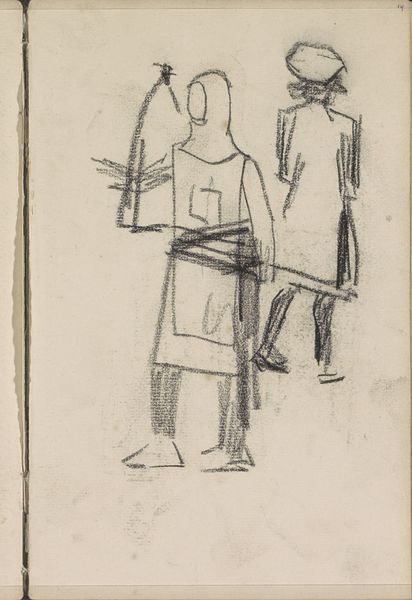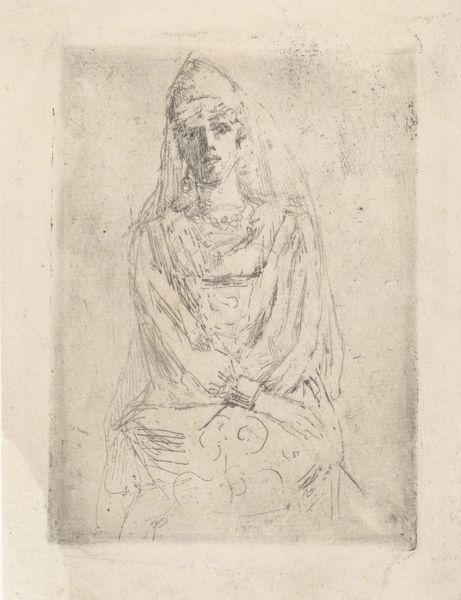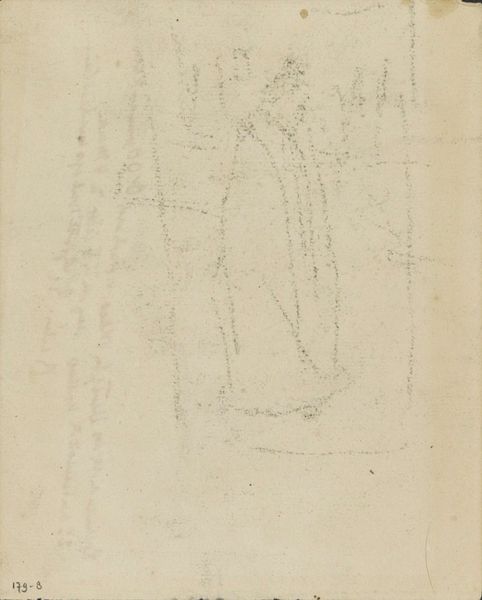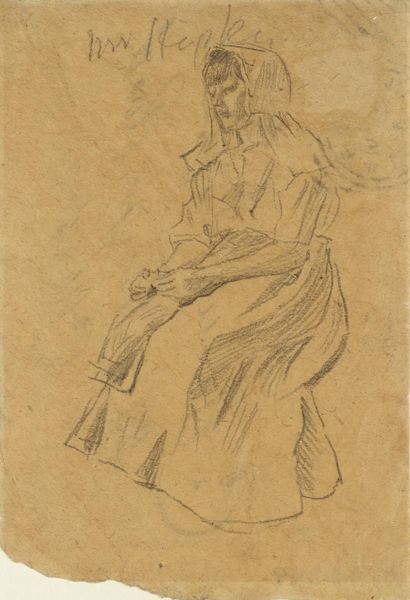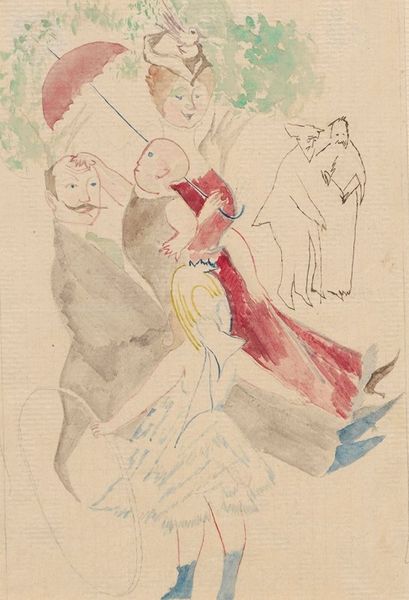
painting, watercolor
#
portrait
#
painting
#
landscape
#
figuration
#
watercolor
#
post-impressionism
#
watercolor
Dimensions: height 340 mm, width 180 mm
Copyright: Rijks Museum: Open Domain
Paul Gauguin made this watercolor, ink, and gouache artwork titled, *Maria met kind en vrouw met gevouwen handen* sometime between 1848 and 1903. Gauguin was a leading Post-Impressionist artist, who rejected the staid traditions of the French art establishment. Like many artists of his time, he sought a more authentic and spiritual way of life outside of Europe. He moved to Tahiti in the 1890s, where he created images of Polynesian life and culture. We see his interest in both the Christian and indigenous traditions here: he depicts the Virgin Mary with a Tahitian woman with folded hands, who is possibly praying to her. Gauguin often represented native people as noble savages, who are uncorrupted by civilization. This perspective is obviously Eurocentric, reflecting the colonial attitudes of the time. Understanding Gauguin's art requires us to consider the complex cultural and historical context in which it was created and interpret the art as something contingent on these forces.
Comments
No comments
Be the first to comment and join the conversation on the ultimate creative platform.
